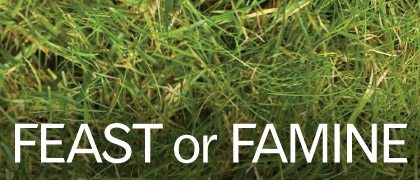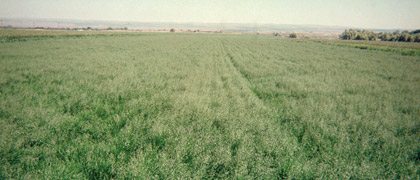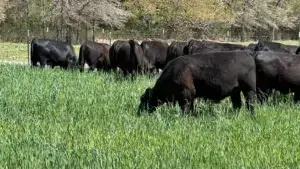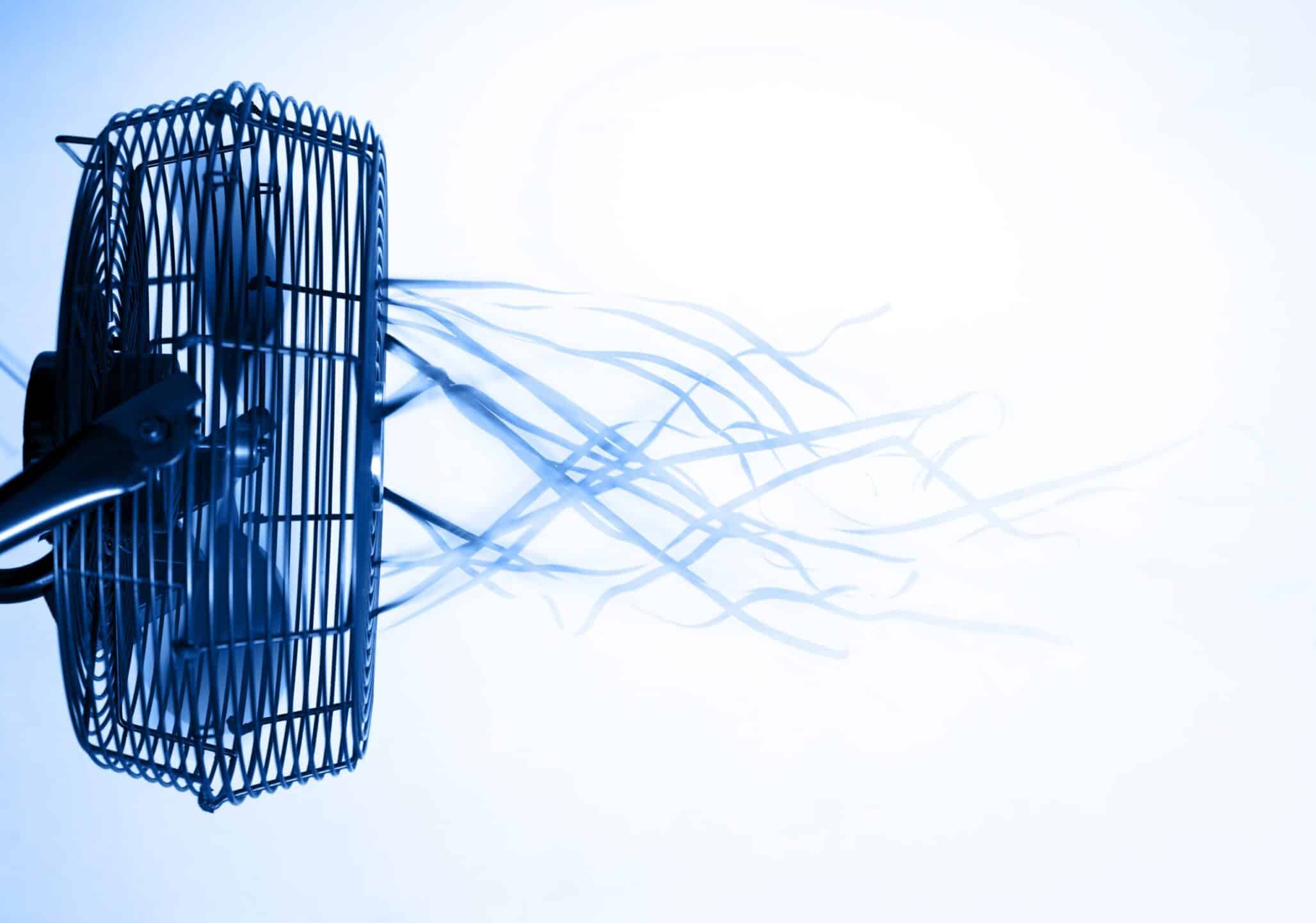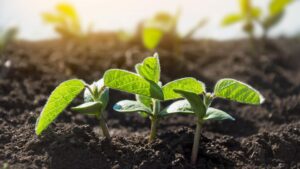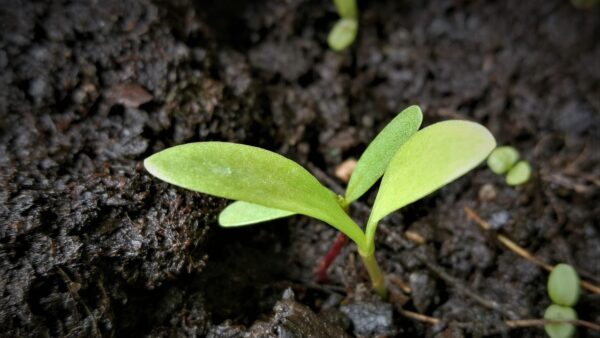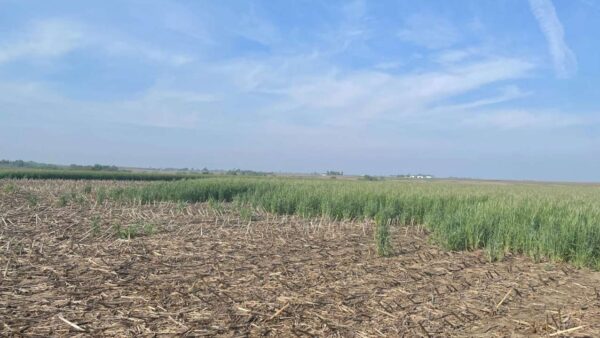Low supply and high demand are fueling price increases in forage and turf grass markets.
Like all markets, forage and turf grass markets are subject to the laws of supply and demand. Across the board, there are a number of factors keeping prices up, including low carryover inventory, rising grower prices, competition for acres and low yields, to name a few. Despite all of these challenges—or perhaps because of them—market experts expect prices to remain strong into 2014.
Turf Market
Bill Dunn, executive vice president and general manager at Seed Research of Oregon, based in Corvallis, Ore., says rising prices in the turf market are tied to a number of issues in Oregon, namely poor yields and competition for acres. Rising grower costs have also been an issue. While grower costs on tall fescues have remained flat, increasing by less than two percent, perennial ryegrass costs, he says, have increased some 12 percent from last year.
“Supply and demand—it’s really all about that,” says Dunn. “Even if your costs are higher and your competition’s higher, if the demand isn’t there then the prices don’t rise. Currently, carryover inventories, particularly on perennial, are at the lowest level we’ve seen in 10 years.”
Demand might be steady, but Dunn thinks the higher prices will force some superintendents to either limit their acres or look for alternatives. “Their budgets are set early and they didn’t account for a 12 percent increase in the cost of goods,” he says.
Dunn says he’s been seeing a shift to lower cost items, like intermediate ryegrasses, in the golf course overseeding business for a while now. “There’s also improved annual ryegrasses,” he says. “Typically, they are light green with a very broad leaf. Now the breeders have developed new varieties that are darker and finer-textured. They’re coming into play across the southern tier. They have higher yields so they come in at a lower cost. People are also using combination products of perennials mixed with turf annuals and turf intermediates.”
Rising prices in the turf market are tied to a number of issues, namely poor yields and competition for acres.
Steve Tubbs, president of Turf Merchants Inc. in Tangent, Ore., agrees that markets are as strong as they’ve ever been. “Probably not because we’re good salesmen, though, or because there’s been good market recovery, but because of very poor yields,” he says. Weather has been a huge factor, Tubbs adds, with an unusual heat wave in April, followed by a wet summer on the East Coast and serious disease problems.
“South Carolina and Georgia are having record low temperatures already, so we’re not seeing the potential for a really great fall, but it’s going to be offset by the fact that our yields are disappointing,” says Tubbs. “We think they’ll offset each other so prices will stay strong.”
Another contributing factor, says Tubbs, is competition for acres. Most grasses are grown on non-irrigated, heavy clay soil that stands in water all winter. Historically, wheat hasn’t been grown in the region because it rots, but with the return of the wheat market, some 500,000 acres of grass has become 300,000 acres of grass. The other 200,000 acres have been replaced by wheat.
“Wheat is a very easy crop to grow,” says Tubbs. “A lot of guys are tiling the ground, and Oregon State University has ramped up their wheat program, so they’re developing new strains of wheat that do better in the [Villamette] Valley, specifically boosting yields and tolerance for dampness.”
As wheat proves to be more economically viable, growers resist moving back into grass, especially since it’s expensive to grow, says Tubbs. But it’s not just wheat. Growers are looking to alternative crops, such as hazelnuts and blueberries, even cover crops.
“Hazelnut trees take five to seven years to bear nuts,” he says. “But it’s a permanent reduction of grass seed acres, obviously, because they’re going to be orchards.” When times are good, Tubbs says producers can gross $50,000 an acre from blueberries, while grass seed might gross $1,500. Oregon has also seen an increase in cover crops. Clover production, for instance, has increased by some 14 million pounds in the past five years, up from 10 million pounds to 24 million.
Bryan Muntz, who is president of both the Oregon Seed Association and IntegraTurf Inc. based in Albany, Ore., agrees that competition for acres is stiff. “If you’re a farmer, you’ve got a lot of options to go with,” he says. “It’s been keeping our inventory in control. It’s really hard to overproduce when it’s really hard to get the acres in the first place.”
With inventories down and yields lower than anticipated, Muntz expects prices to remain strong into 2014. “It’s really hard to talk about 2014, though,” he says. “Ask me in another month when we start looking into September and the first part of October and we start seeing what we’ve actually got planted and how the weather’s looking for the next couple of months. After that we’ll have a better indication of what we’re looking at for 2014.”
Supply and demand are keeping prices up in the forage and turf grass markets.
Forage Market
What’s happening in the forage market is very similar to what is going on in the turf market. Acres are in decline and supplies are low, but because demand is still high, prices are too.
Robin Newell, senior business manager of forages for DuPont Pioneer in Des Moines, Iowa, says alfalfa acres in the United States have been in something of a long-term decline, driven primarily by two main trends. One is the use of more corn silage on dairies, and the second is increasing commodity prices. Together, both trends have driven producers away from alfalfa and toward crops with faster increases in commodity pricing.
“As a result, alfalfa acres have gone into a decline, which seems to have stabilized now,” says Newell. “But because of these lower acres, we also have higher hay prices. With these higher hay prices, it now seems these last couple of years there’s more interest in planting new acres of alfalfa.
“I think, and this is just my opinion, that as corn prices capitulate and other commodity prices moderate here, I anticipate the potential for more hay acres to be planted over the next couple of years, as people rebalance their crop mix,” Newell continues. “And I think commodity pricing will help drive that too, especially if hay prices stay high over the next couple of years.”
Matt Fanta, of Forage Genetics in Shoreview, Minn., agrees that forage markets have been heavily influenced by low supply, high demand and commodity prices.
“In the Upper Midwest there was quite a bit of winter-kill that happened in Minnesota, Wisconsin and Iowa, and that facilitated a lot of growers replacing a lot of alfalfa stands,” says Fanta. “But we also see a lot of demand in that there’s not a lot of forages for feed in the marketplace and so the value of those forages continues to increase.”
Fanta expects that demand will remain strong, which is consistent with what he’s seen over the past couple of years. “The value associated with forages continues to be strong, but it is part of the overall value in commodities in general,” says Fanta. “Good quality forages help animals produce and we’ll continue to see a demand for those quality forages in the marketplace.”
Melanie Epp


